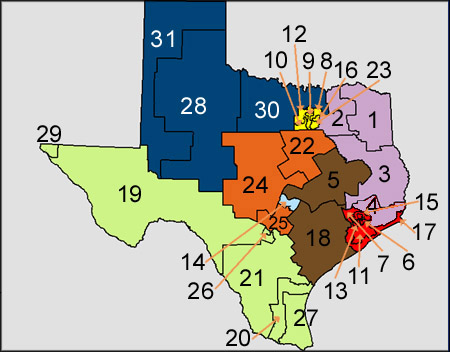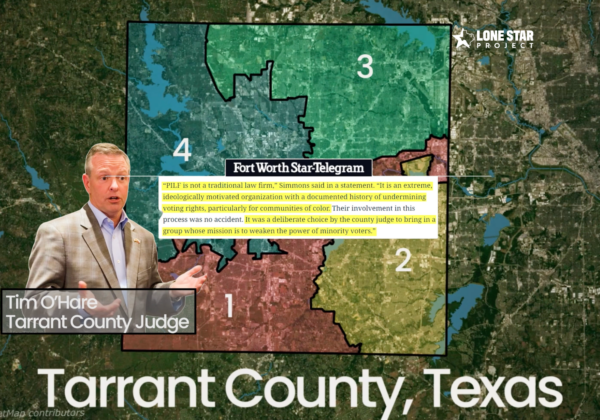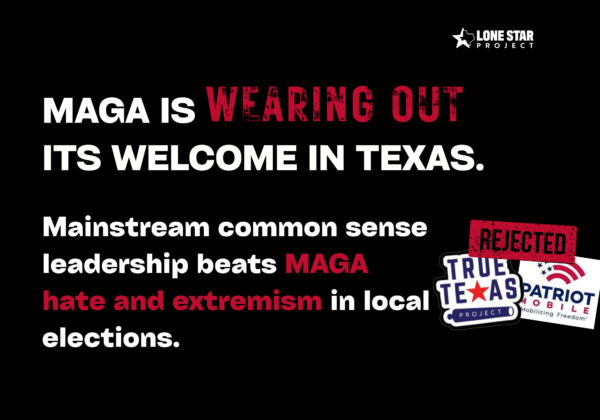Texas Republican Leaders Back Lame Horse(s)
For Texas Republican leaders, John McCain was also an afterthought. Not one Texas statewide officeholder named McCain as their first choice for President. Rick Perry, in fact, picked New Yorker Rudy Giuliani, whose campaign spent over $50 million to claim only one delegate. (Source: Dallas Morning News, January 31, 2008) Texas AG Greg Abbot and Land Commissioner Jerry Patterson chose almost as badly, picking Fred Thompson, whose sleepy campaign ended early.(Source: Fred Thompson Campaign Website)
While it’s up to Republican activists to hold Perry, Craddick and Dewhurst accountable for failing their party, Texas Democrats are preparing for an exciting primary, familiarizing themselves with delegate selection rules and recent Democratic Primary turnout trends, and looking forward to November with energy and optimism.
How Does the Texas Primary Work?
Texas will send a total of 228 delegates to the Democratic National Convention. 126 delegates will be assigned based on primary results in 31 State Senate Districts (instead of allocating delegates by its 32 Congressional Districts like many states). The number of delegates in each Senate district varies based on previous Democratic turnout in the last two general elections. The delegates from each Senate District are assigned to candidates proportionally based on the percentages they receive on primary day.
Of the remaining 102 delegates, 67 are determined through a convention process that begins at precinct conventions (caucuses) on the night of March 4 and culminates with delegate allocation based on each candidate’s delegate strength at the State Convention on June 6-8. Of those 67 delegates, 42 are “at large” rank and file delegates and 25 are pledged party leaders, legislators, and local elected officials.
The remaing 35 delegates are “unpledged” delegates, including 32 so-called “superdelegates” who are DNC Members, Members of Congress, a former House Speaker and a former DNC Chair. Three other delegate slots are reserved for highly-honored state Democrats, such as respected former officholders.
- 126 Senatorial District Level Delegates allocated by primary results.
- 42 At-Large Delegates and 25 Pledged Party Leaders, Democratic Mayors and Legislators, all allocated by the presidential preference of delegates attending the State convention (with a 15 percent threshold).
- 32 Super Delegates made up of Members of Congress, Members of the DNC, past House Speakers and former DNC Chairs.
- 3 Unpledged Delegates (Add-Ons) elected through a three-tier, post-primary convention process.

| Texas Democratic Delegate Subtotals by Region | ||
|---|---|---|
| Region | Color | Delegates |
| Austin | Light Blue | 8 |
| Border/South | Green | 22 |
| Hill Country – Central | Orange | 12 |
| East-Central | Brown | 8 |
| East | Purple | 16 |
| Houston-Galveston | Red | 26 |
| North Texas | Yellow | 26 |
| West Texas | Dark Blue | 8 |
| Texas | 126 | |
| Texas Democratic Delegate Totals By Senate District | ||
|---|---|---|
| Senate District | Delegates | Region |
| 1 | 4 | East |
| 2 | 4 | East |
| 3 | 4 | East |
| 4 | 4 | East |
| 5 | 4 | East-Central |
| 6 | 3 | Houston-Galveston |
| 7 | 3 | Houston-Galveston |
| 8 | 4 | North Texas |
| 9 | 3 | North Texas |
| 10 | 5 | North Texas |
| 11 | 4 | Houston-Galveston |
| 12 | 4 | North Texas |
| 13 | 7 | Houston-Galveston |
| 14 | 8 | Austin |
| 15 | 4 | Houston-Galveston |
| 16 | 4 | North Texas |
| 17 | 5 | Houston-Galveston |
| 18 | 4 | East-Central |
| 19 | 4 | Border/South |
| 20 | 4 | Border/South |
| 21 | 4 | Border/South |
| 22 | 3 | Hill Country-Central |
| 23 | 6 | North Texas |
| 24 | 3 | Hill Country-Central |
| 25 | 6 | Hill Country-Central |
| 26 | 4 | Border/South |
| 27 | 3 | Border/South |
| 28 | 3 | West Texas |
| 29 | 3 | Border/South |
| 30 | 3 | West Texas |
| 31 | 2 | West Texas |
| Total | 126 | |



